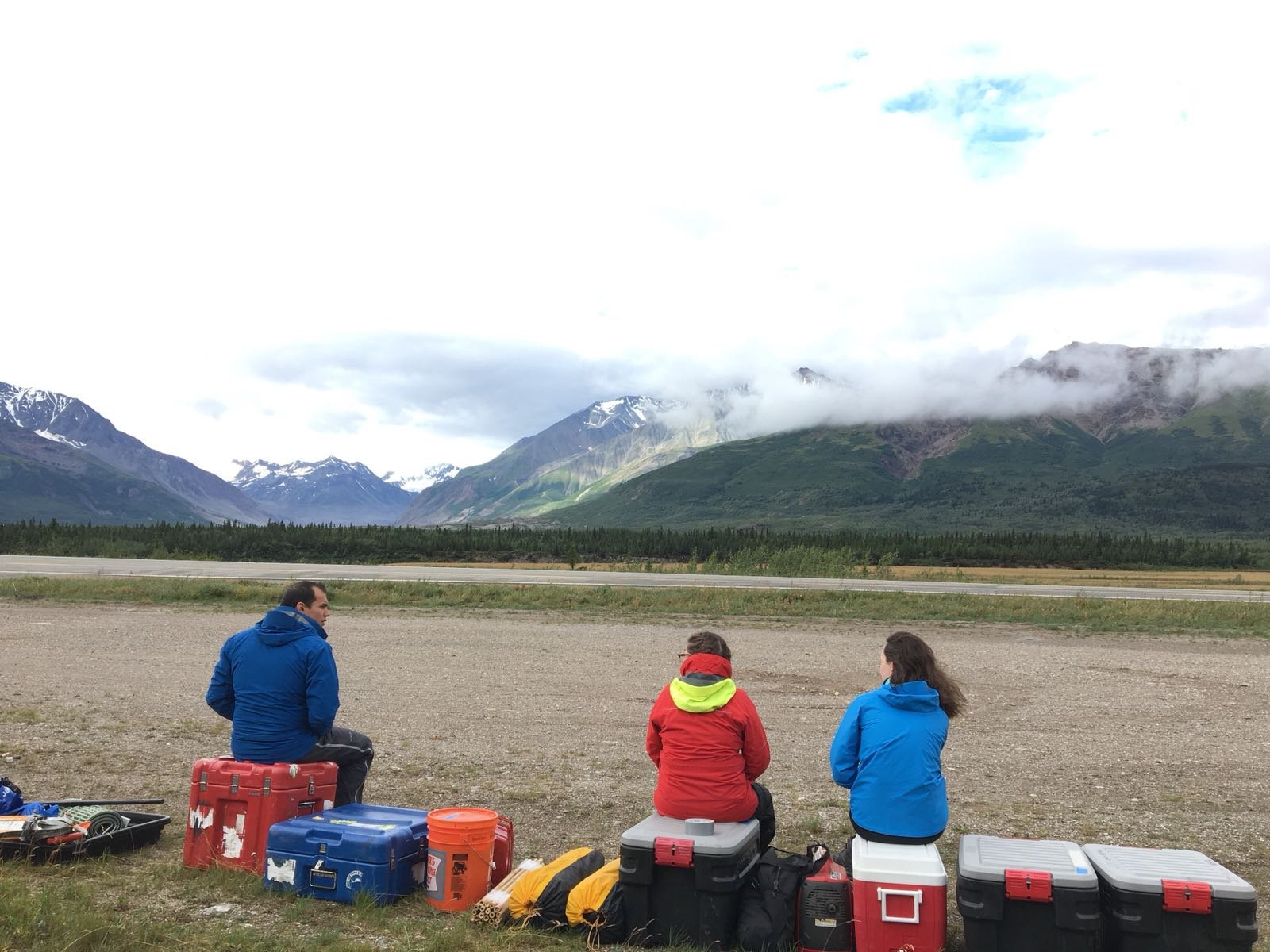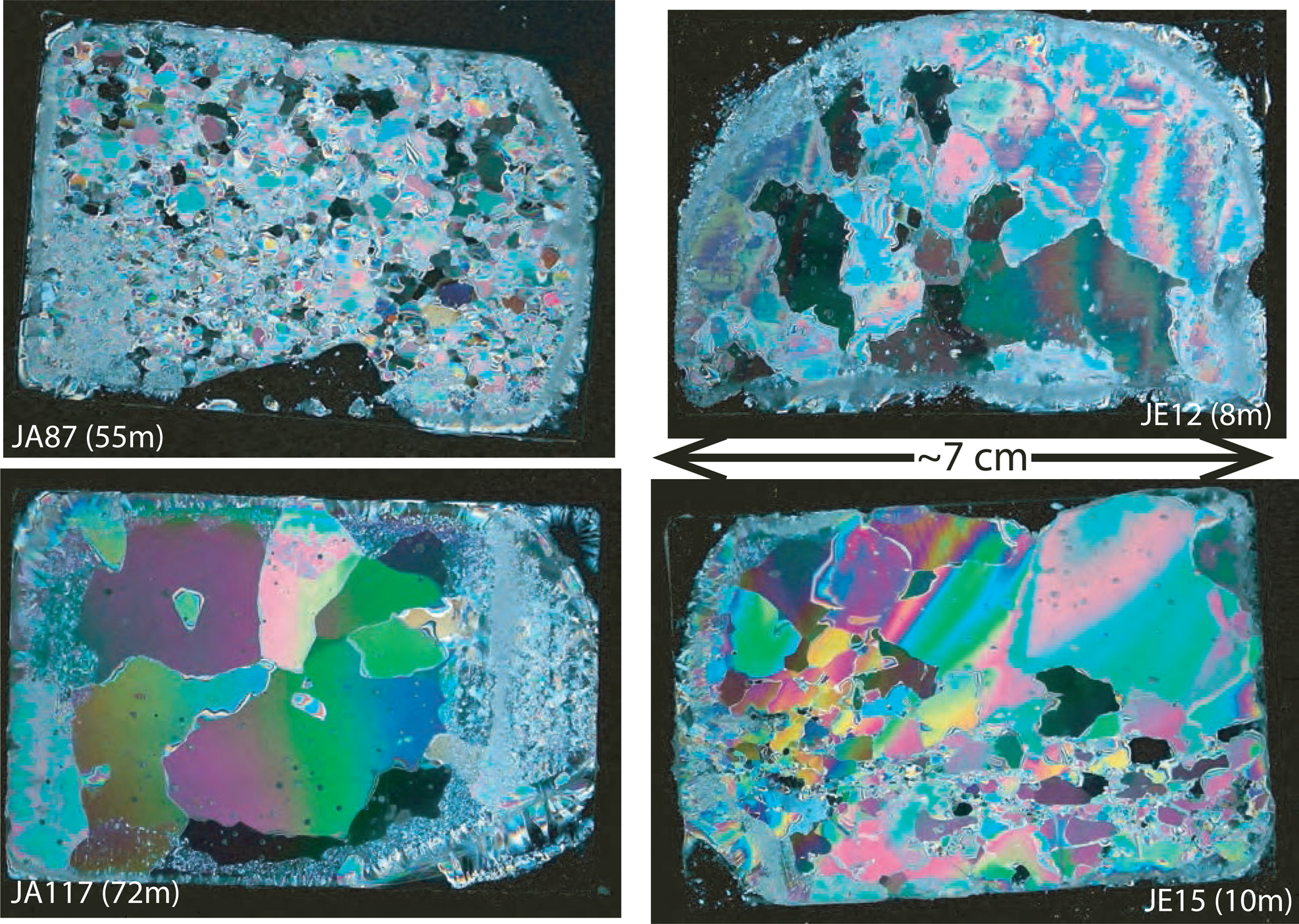Jarvis Glacier, Alaska
For my MS research, I developed a novel cost-effective borehole tilt sensor (along with its corresponding sensor network for data transmission and storage) that we deployed in 2 boreholes drilled close to the shear margin of Jarvis Glacier in Alaska to measure ice kinematics through recording borehole deformation. Jarvis is a polythermal glacier, characterized by strong shearing and wet-based beds and is one of two major glacier groups, along with temperate glaciers, where streaming flow occurs. Regions of streaming flow are responsible for draining the major ice sheets and alpine regions.
Our project goals aimed to improve our understanding of flow dynamics at glacier shear margins and how streaming flow relates to the constitutive flow law for ice (Glen’s Flow Law). Applying borehole geophysics, microstructure analysis, ice core analysis, and radar surveys, we completed a rare systematic in-situ study in a natural setting of streaming flow, from which we were able to gain valuable insights into the region’s flow dynamics. In addition to providing the field data, the successful deployment of our tilt sensor served as proof-of-concept of its viability for similar borehole geophysics endeavors.
Thin sections from several ice cores, illustrating grain shape and size distribution. Fine-grained areas on the perimeter are where water seeped under the sample. Image courtesy of Chris Gerbi.
Simplified schematic of our novel tilt sensor, which is able to make accurate gravity, magnetic, and temperature readings while operating at temperatures as low as −20°C and in wet environments like polythermal glaciers. Multiple sensors can be connected to form a sensor network to be lowered into boreholes. Click the sensor image for more technical details.
Location of our Jarvis research site in southeast Alaska, with the two borehole sites JA and JE.

Me standing in front of the drill tent. Photo courtesy of David Clemens-Sewall.

Our field team (from left to right: Steve, Kate and Clara; not pictured: me as the photographer) along with our cargo and equipment waiting for the helicopter that will take us up to Jarvis for our 2018 field season.

A stunningly beautiful green and red aurora. Photo courtesy of David Clemens-Sewall.


